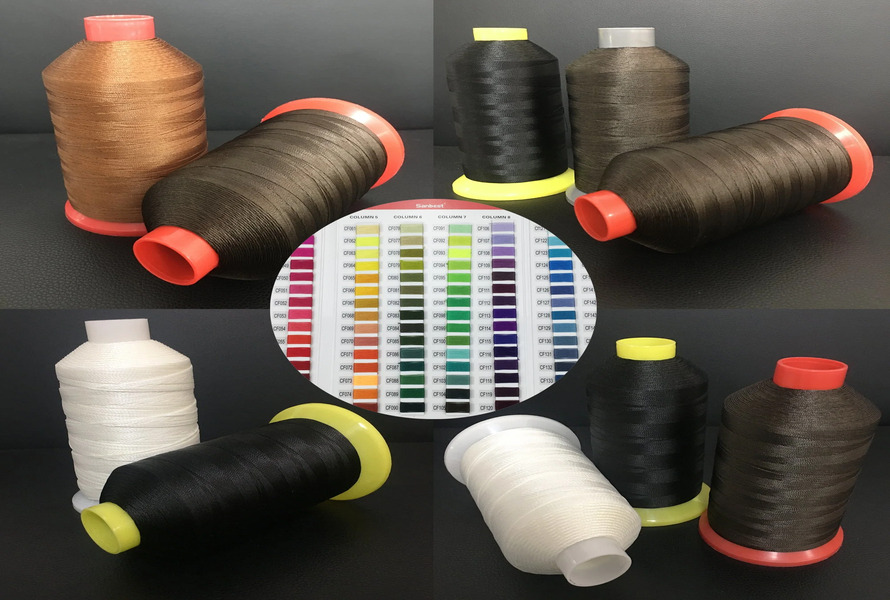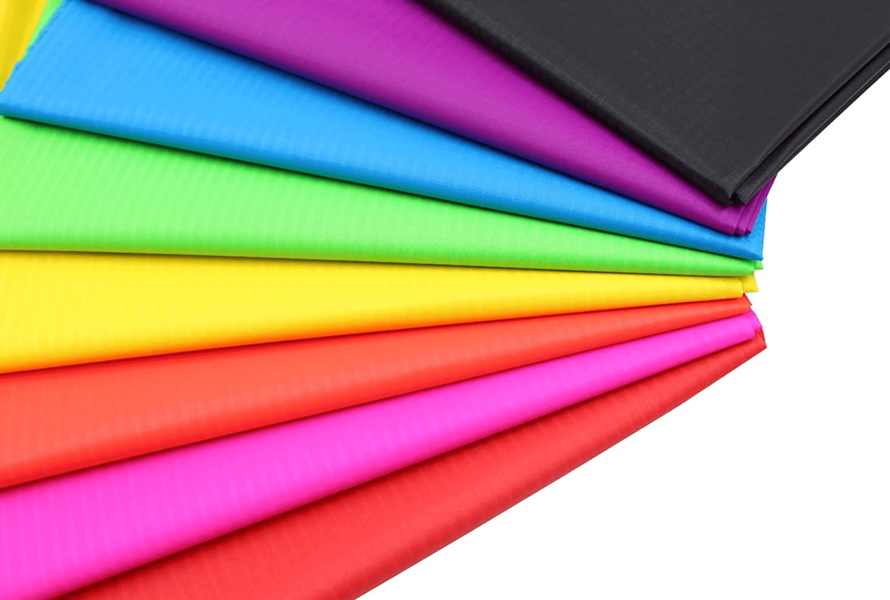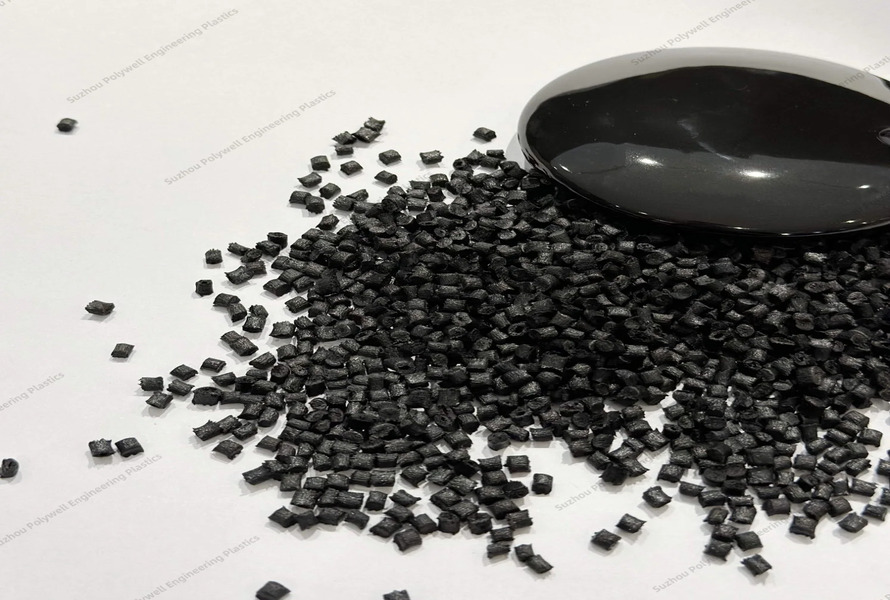1. What is Nylon?
Nylon is known as a thermoplastic whose input material is petroleum and goes through a melting process with a large amount of heat to form many different shapes such as: hard and fibrous.
Besides, many customers also wonder: "Is Nylon considered a Polymer?" The answer is yes, this nylon polymer can be used as a substrate to combine with various additives to obtain a wide range of textures and properties tailored to the specific requirements of the product. There are 5 common types of nylon including nylon 6,6, nylon 6, nylon 5 10, nylon 4,6 and nylon 1,6. All possess varying degrees of durability, elasticity, luster, resilience and impact resistance.
These are basic definitions, but they are enough to help you understand the details of Nylon's structure and physical properties. That is also the reason why they are commonly used in life. Let's move to the next part with EuroPlas to understand better!
2. Top 10 common applications of Nylon in life
2.1. Packaging and consumer goods
The most common is nylon used to produce packaging or nylon bags used in daily activities. It is not too difficult for us to see images of nylon bags that Vietnamese people often use. Because of the stable insulation capacity of nylon up to more than 500 degrees Celsius, they completely meet the standards for use in daily food storage activities.

Nylon is commonly used in life.
2.2. Fishing
Next, nylon is used to produce fishing nets for fishermen around the world. To produce fishing nets, nylon must meet the criteria of elasticity, tensile strength and tension. All of which are fully converged by nylon. The elastic modulus index of nylon is 0.4 x 106 psi or 2.7 GPa.
2.3. Textile & Fashion
The application of nylon in the fashion industry is also favored by many famous brands such as: Zara, H&M, Channel. Nylon fabric can be produced into sportswear, jackets,... because they are waterproof for a long time. In addition, Nylon is capable of withstanding changes in the surrounding environment's temperature, so the material will keep your body warm.

Nylon is made into high-grade sewing thread.
2.4. Sports
The tensile strength of carbon fiber reinforced nylon composites is usually higher than 3500 MPa, 7 to 9 times higher than steel. Therefore, they are used to produce ropes, sports shoes and sports equipment.
2.5. Industry
Machine parts in the automotive or heavy industry. Nylon is not only heat-resistant up to 500 degrees Celsius but also a stable insulating material. In addition, Nylon is also very easy to shape during the manufacturing process and is harder than steel. Therefore, the automotive industry uses this material to produce components such as bolts, nuts, screws.
2.6. 3D printing
Nylon is melted and formed into plastic filaments for the very popular 3D printing field. PA6 and PA66 are the two most commonly used nylons because they have abrasion resistance and a low coefficient of friction (about 0.3). Products 3D printed from Nylon PA6 or PA66 plastic have longer durability.

Nylon is used in many fields with specialized characteristics.
2.7. Automotive equipment & engines
The coefficient of friction as well as the ability to resist abrasion also helps Nylon to be used to produce bearings in machinery systems or car engines. The bearings have a very fast moving speed and easily increase heat, but don't worry too much because 530 degrees Celsius is the temperature at which Nylon will catch fire. In addition, manufacturers will increase heat resistance by combining PA6 & PA66 with flame retardant additives.
2.8. Medical field
Nylon is also used in the medical field. Some typical products from nylon in medicine are: surgical sutures, catheters and medical fabrics. Nylon 6 is a commonly used material because it has biocompatibility, chemical resistance and high durability. Therefore, nylon will be easily suitable for the disinfection process and contact with wounds.
2.9. Electronic Components
Nylon 6 is a very good insulating material and is widely used in the electrical and electronics industry. It is used to produce cable insulation, connectors, switches, sockets and circuit breakers. Its high temperature resistance and electrical properties are the reasons why it is suitable for these applications. Besides nylon 6, manufacturers can choose.

Nylon is also used in the automotive industry.
2.10. Camping Equipment & Tools
Because nylon is waterproof and durable, it is the perfect material for manufacturing professional camping equipment such as tents, camps, ropes, etc.
3. Why is Nylon so popular?
The top 10 applications of nylon in life listed above by EuroPlas also prove the popularity of this thermoplastic. For easy replication and commercialization in most fields, price is one of the factors affecting the popularity of nylon. Currently, nylon thermoplastics have a relatively low cost of about $3/kg. However, EuroPlas notes that these prices will not be fixed and they will also depend on the type of nylon and the customer's purchase location.
Nylon possesses basic properties from surface durability to chemical resistance, temperature resistance or heat resistance over 500 degrees Celsius suitable for a variety of fields. For example, nylon bags can be used for a long time, and can hold a lot of items without tearing easily like paper bags. Besides, nylon is not too big a worry for the environment, modern recycling technologies can recycle and combine nylon with other plastic additives for reuse.

Nylon fabric is very popular in the textile industry.
In addition, nylon thermoplastics are also divided into many forms with different characteristics, suitable for each specific industry, for example: nylon 6 or nylon 12 will withstand UV radiation better if they are Compare with nylon 6.6. Furthermore, the chemical properties of nylon allow them to be easily combined with common plastic additives such as: flame retardant additives, antistatic additives, and anti-UV additives.
Nylon is not only light in weight, but the flexural strength index of this material also reaches 0.4 x 106 psi or 2.7 GPa. For example, the molecular weight of nylon 6 6 ranges from 20,000 to 50,000 grams per mole. The relatively high molecular weight contributes to the toughness and durability of the material. The molecular weight of nylon 6 6 is an important factor affecting its mechanical and thermal properties.
Besides, nylon has quite good chemical compatibility, they can combine stably with spirits, oils, gasoline, fuels and some types of alcohol. Nylon is just incompatible with ozone as well as most strong acids.
It can be said that nylon is a thermoplastic that is durable, strong and easily shaped at a cost suitable for mass production processes. Although nylon products are not biodegradable, recycling will be the top priority. Those are the basic reasons to answer the question: "Why is nylon so popular?"
In the next section, EuroPlas will suggest to customers a line of quality and popular nylon materials on the market.
4. Introduction to EuroPlas Nylon products
EurPlas has successfully researched and developed PA (nylon) engineering plastic compound to meet the market demand for a high quality, stable, comprehensive material line as well as safe for consumers' health. Two outstanding nylon product lines at EuroPlas are mixed compound PA6, PA66 and fiberglass compound PA66, PA6.
3.1 Compound mixture of PA6 and PA66
PA6 and PA66 are two typical PA plastics. They are produced by mixing groups of materials such as: PA6 plastic, PA66 plastic and elastomer. Both nylon 6 and nylon 66 have their own characteristics. While PA6 has a lower melting temperature but is easier to process, less deformable and cheaper, PA66 has lower water absorption but higher temperature resistance, hardness and abrasion resistance than the other type. again.
Therefore, EuroPlas' PA6 and PA66 compound compounds are used in a variety of industries from automobiles, motorbikes to electronic devices. Additionally, they are also used to produce rolling bearings, office equipment gears, carburetors, exhaust control valves, fuel tank caps and other gear-related parts.

Compound mixed with PA6 and PA66
3.2 Compound glass fiber PA66 and PA6
PA66 and PA6 GF (Glass fiber) are created from the combination of PA66 & PA6 plastic substrates with glass fiber reinforcement. Three groups of outstanding properties of Polyamide-6 (PA6) and Polyamide-66 (PA66) are hard, durable and heat resistant. In addition, these properties of PA6 and PA66 are also strongly enhanced when glass fibers appear.
Furthermore, compound PA66 and PA6 - GF are rated very well in terms of material durability over long periods of use because the glass fiber content is up to 65%. In particular, these two material lines still have the ability to insulate, resist abrasion as well as resist the impact of strong chemicals. Therefore, the material is widely used in the production of gears, bearings, transmission belts, carburetor components, computer components or household electrical components.
Conclusion
The above article introduced the top 10 applications of nylon that you should know. Besides, EuroPlas has suggested to customers popular nylon products on the market. Please continue to follow us to update the latest news about the materials market in general and plastics in particular!